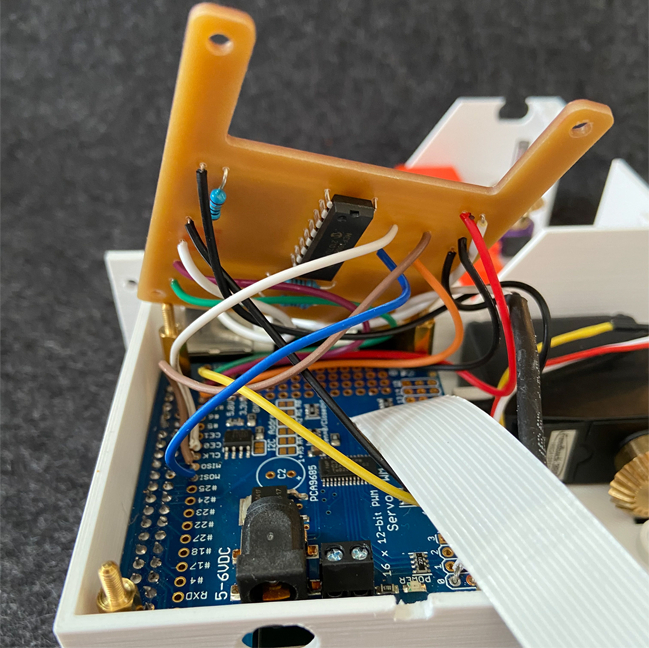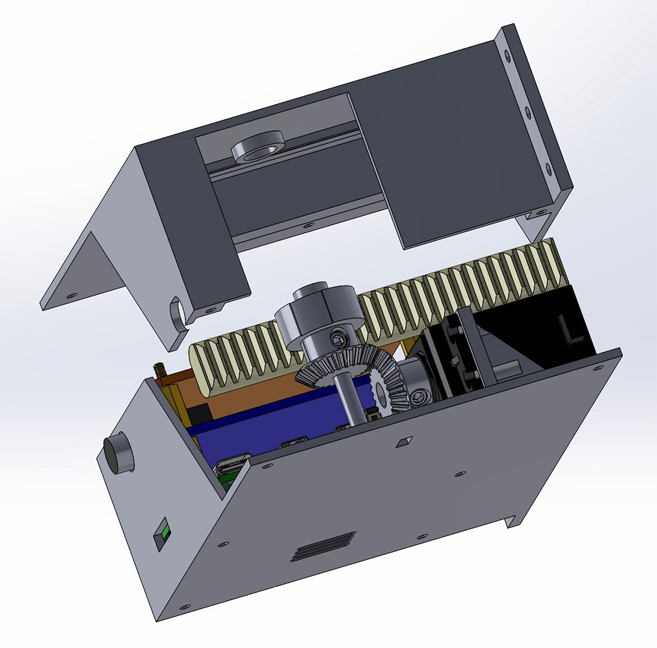Raspberry Pi Unlocks Door Automatically with Facial Recognition
Automating your smart home with a Raspberry Pi is a popular idea in the Raspberry Pi community and there are plenty of unique ways to implement the SBC into various designs. Today we’re sharing another home automation-based project created by maker and developer Dillon McCardell who’s using a Pi to operate a door locking system using facial recognition known as AuraLock.
The system works just as you would expect—it uses a camera to capture images of potential faces. If a recognized and approved face is detected, the Pi will trigger the deadbolt to unlock. Once the deadbolt has been unlocked, users can enter the room and either manually lock the door or do so using the corresponding mobile application.
The mobile app was created from scratch by McCardell just for the AuraLock project. It’s Android-based and provides a slew of features that take the project from a basic idea to a full-fledged smart home system. The app allows users to remotely control the lock, manage user accounts, access the camera in real-time and even enable a mode that automatically unlocks for any face rather than a specific one—ideal for times when one might be expecting company.



AuraLock is powered by a Raspberry Pi with the help of a Servo PWM Pi HAT as well as a few additional components. It uses a 12 MP camera module, an LED, a servo, a magnetic door sensor, and an MCP3008 Analog to Digital Converter (ADC). All of these components work together using a custom PCB McCardell developed for the AuraLock project. Everything is housed inside of a custom, 3D-printed housing created using SolidWorks and Fusion360.
The software side of the project is rather intricate and McCardell was kind enough to share all of the juicy details about how it works on the project page. To summarize, the mobile app uses a Firebase database to communicate with the Raspberry Pi. The mobile app is designed with a custom GUI with various buttons for things like locking, unlocking, capturing images, monitoring the usage history, and adding new faces to the unlock registry.
If you want to recreate this Raspberry Pi project or just get a better idea of how it works together, visit the official AuraLock project page and be sure to follow McCardell for more impressive developments in the future.
Get Tom's Hardware's best news and in-depth reviews, straight to your inbox.

Ash Hill is a contributing writer for Tom's Hardware with a wealth of experience in the hobby electronics, 3D printing and PCs. She manages the Pi projects of the month and much of our daily Raspberry Pi reporting while also finding the best coupons and deals on all tech.
-
salgado18 Reply
That's what SkyNet said. Oh, wait...SkyNetRising said:So - you just need a photo of the owner to enter locked house.
Cool. -
bit_user Reply
Commercial solutions use techniques broadly referred to as "liveness detection", to distinguish the real individual from such exploits as showing a photo or other things you can imagine.SkyNetRising said:So - you just need a photo of the owner to enter locked house.
Cool. -
eye4bear This is interesting, and I might even try it....oh wait, I can't by a new Pi except for 3 times their original MSRP. No thank you.Reply -
bit_user Reply
I know. OMG! Pi is definitely a victim of its own success.eye4bear said:....oh wait, I can't by a new Pi except for 3 times their original MSRP. No thank you.
I prefer ODROID, anyhow. Their pricing and availability has been better than Pi's, but currently it's showing as out-of-stock. Also, due to the SoC, it's limited to 4 GB of RAM.
https://www.hardkernel.com/shop/odroid-n2-with-4gbyte-ram-2/